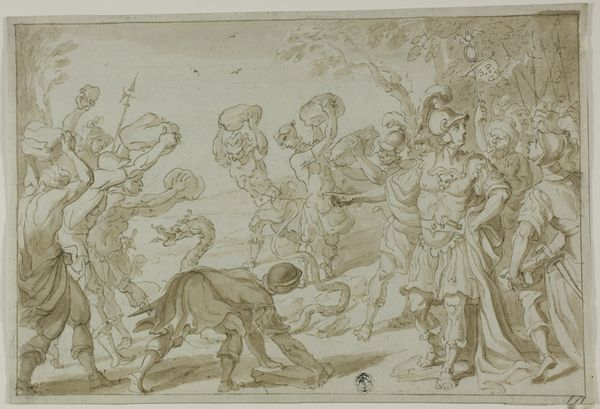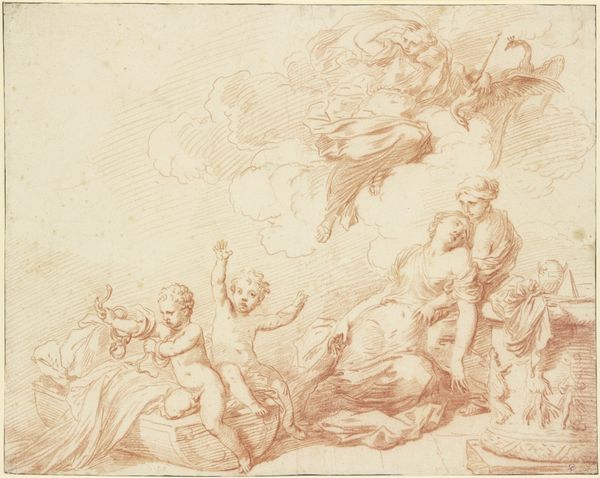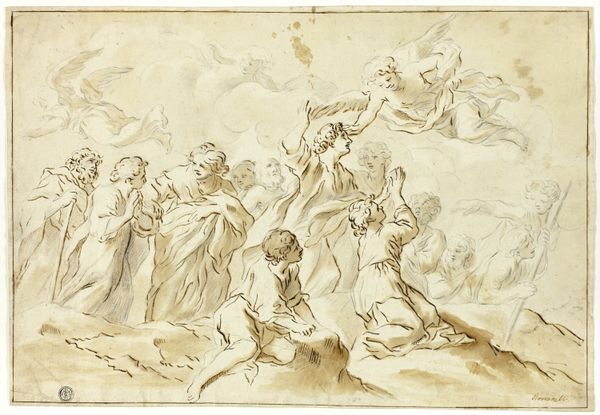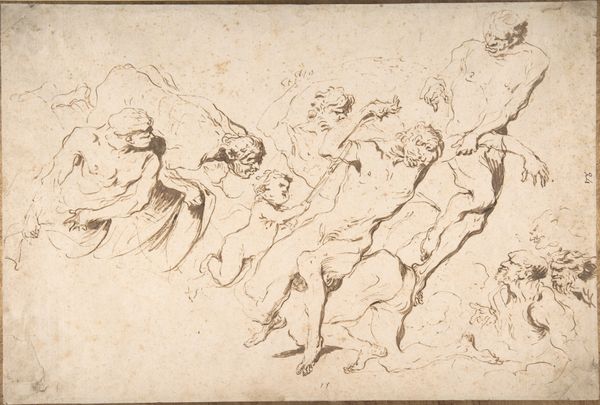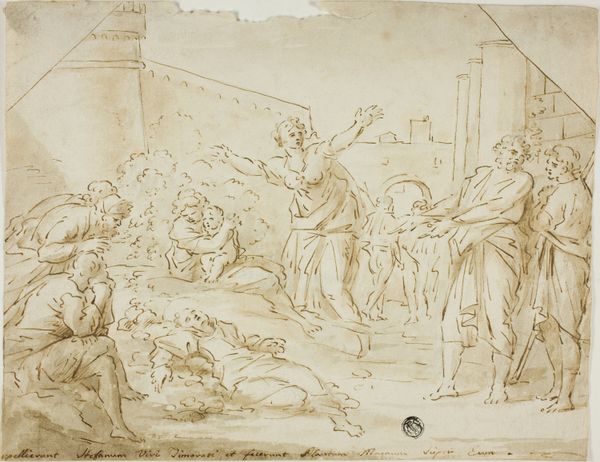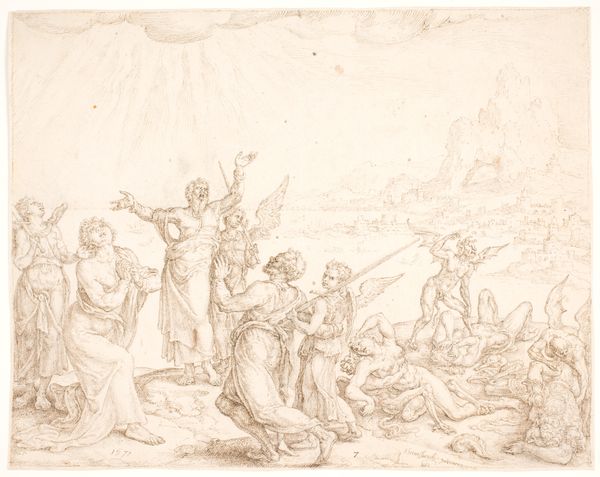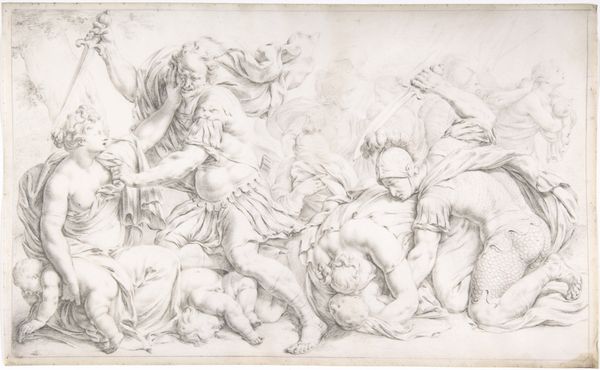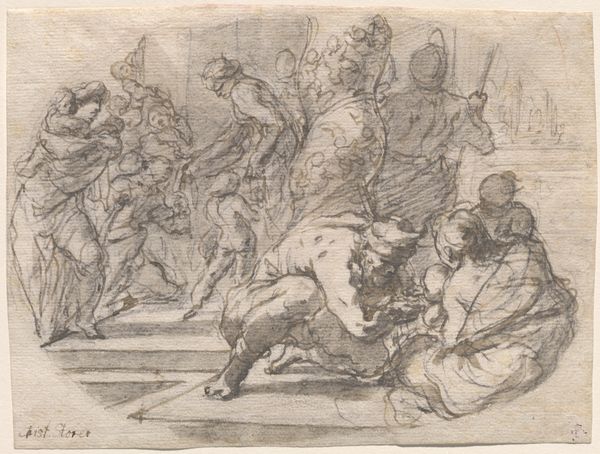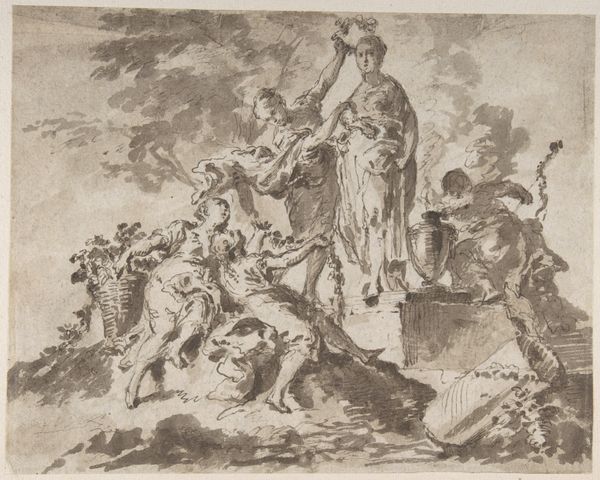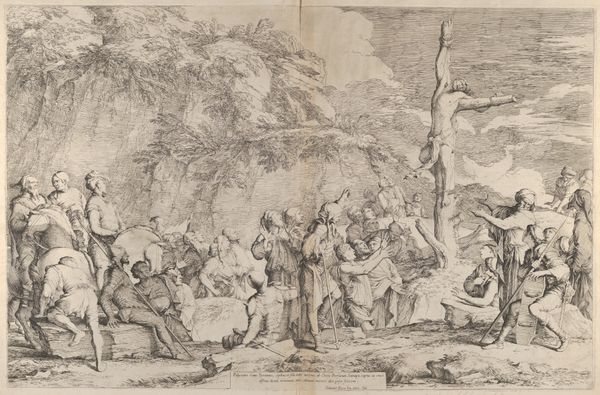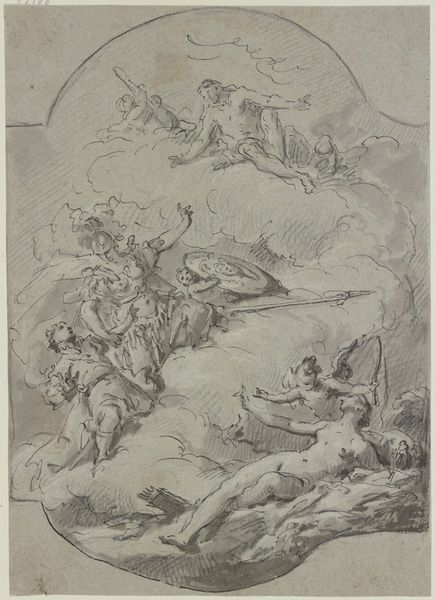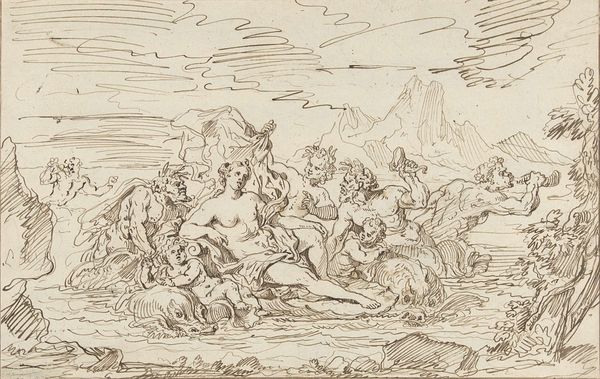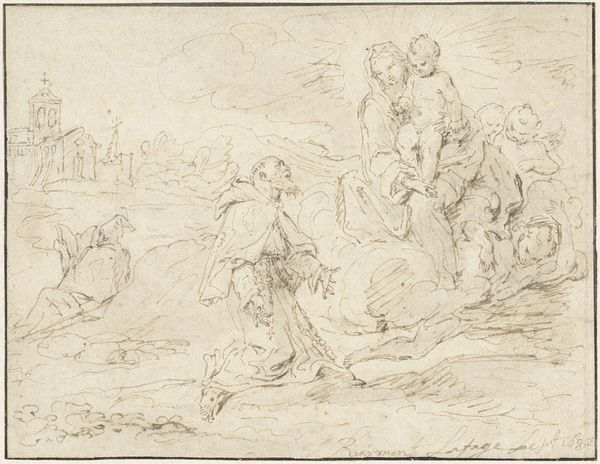
drawing, paper, ink, pen
#
drawing
#
ink drawing
#
narrative-art
#
baroque
#
figuration
#
paper
#
ink
#
pen
#
history-painting
Dimensions: 214 × 295 mm
Copyright: Public Domain
Editor: So, this is Domenico Piola's "Sketches of Religious Scenes," done in pen and ink on paper, sometime in the late Baroque period. It's…fragmentary, almost like a storyboard. What should we be paying attention to here? Curator: What strikes me immediately is the representation of power dynamics inherent in these scenes. Piola, working in a deeply religious context, grapples with how authority, both divine and earthly, is visually constructed. Think about the poses, the gestures, and the settings – who is dominating whom, and how does that relate to societal structures of the time? Editor: I see what you mean. The baptism scene at the top right is pretty overt. What about the scene with the sheep? I suppose the shepherd would represent authority? Curator: Indeed, but let’s not overlook the complex social fabric interwoven within even seemingly simple pastoral scenes. Who owned the sheep? Who benefitted from their wool? Consider how wealth and resources are distributed, and how Piola's choices – his specific compositional elements – may reflect the values of his patrons and the world they inhabited. Do you see any visual clues about status in these figures? Editor: I see the draped clothing that some figures wear, and others don't. Would this suggest different social roles or levels of religious status, such as being closer or further from God? Curator: Precisely. Piola subtly layers meaning, encouraging viewers to decode these social hieroglyphs. Also consider, how does depicting these biblical scenes reinforce the existing power structures within the Church itself? What role did art play in shaping religious identity and consolidating control? Editor: It's a little unsettling to think about these artworks not just as expressions of faith but also as tools for maintaining power. But it gives me a lot to think about! Curator: It reframes how we understand history, doesn’t it? The artist's hand, intentionally or not, participated in the power dynamics of the day, which were built and maintained with social, cultural, and religious norms. We’re not just looking at pretty pictures but complex social documents.
Comments
No comments
Be the first to comment and join the conversation on the ultimate creative platform.
